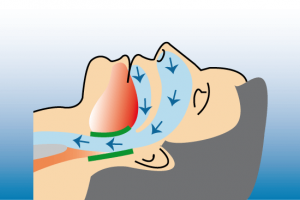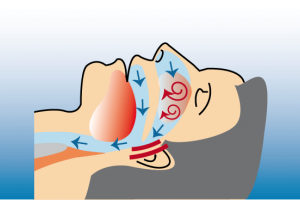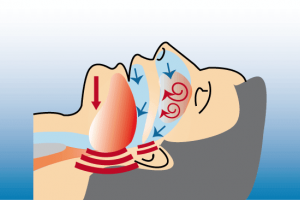ENT Diagnostics
Our interdisciplinary approach is based on a thorough review and analysis of extensive questionnaires, an ENT examination by means of a local anesthetic.
Flexible endoscopes consist of a tube that can twist and turn with the help of a control unit. During an endoscopy, it is extremely important to illuminate the structures which are to be examined. This is done by light through a fiber optic bundle which is integrated in the shaft of the flexible endoscopes, and transported to the end of a polysomnographic tube. At the end of the tube there is an eyepiece that transports the information via optical fibers to a monitor and makes it visible.
Through this examination we can get an impression of the individual anatomy of your upper respiratory tract, i.e. the anatomy of the nose, nasopharynx, oral cavity, palate, pharynx and larynx. With the flexible endoscopy alone, however, we cannot make a full diagnosis.
As a further diagnostic test we have the ambulatory apneagraphy available. This analysis technique was developed in England and Norway and is available in Germany only at a few specialized centers. It is a small device with a flexible two-millimeter thick tube that is inserted into the nose and must be worn over night at home. Through fine pressure sensors and thermistors the apneagraph measure the respiratory flow and pressure conditions of the upper airway giving us valuable information on the location of the cause for snoring or breathing stops - in the nose, soft palate, the tongue base or epiglottis.
The heart rate, blood oxygen content, snoring and change in body position during sleep are also measured. Unlike any other method the measurement allows us to draw conclusions as to whether an operation is required or the problem can be solved by making a mandibular plate. If the apneagraph gives us an indication of the existence of a complex respiratory dysregulation, we recommend performing a polysomnography in our associated sleep laboratory.
-

Normally, air can freely flow through the nose or mouth to the lungs. -

Anatomical changes in the nose, the soft palate or uvula can lead to restraint and turbulence in the air flow - a cause of snoring. -

The air flow can be narrowed at different locations. Nose, soft palate with uvula and tongue base. The narrowing can cause not only annoying snoring but also dangerous breathing pauses.
